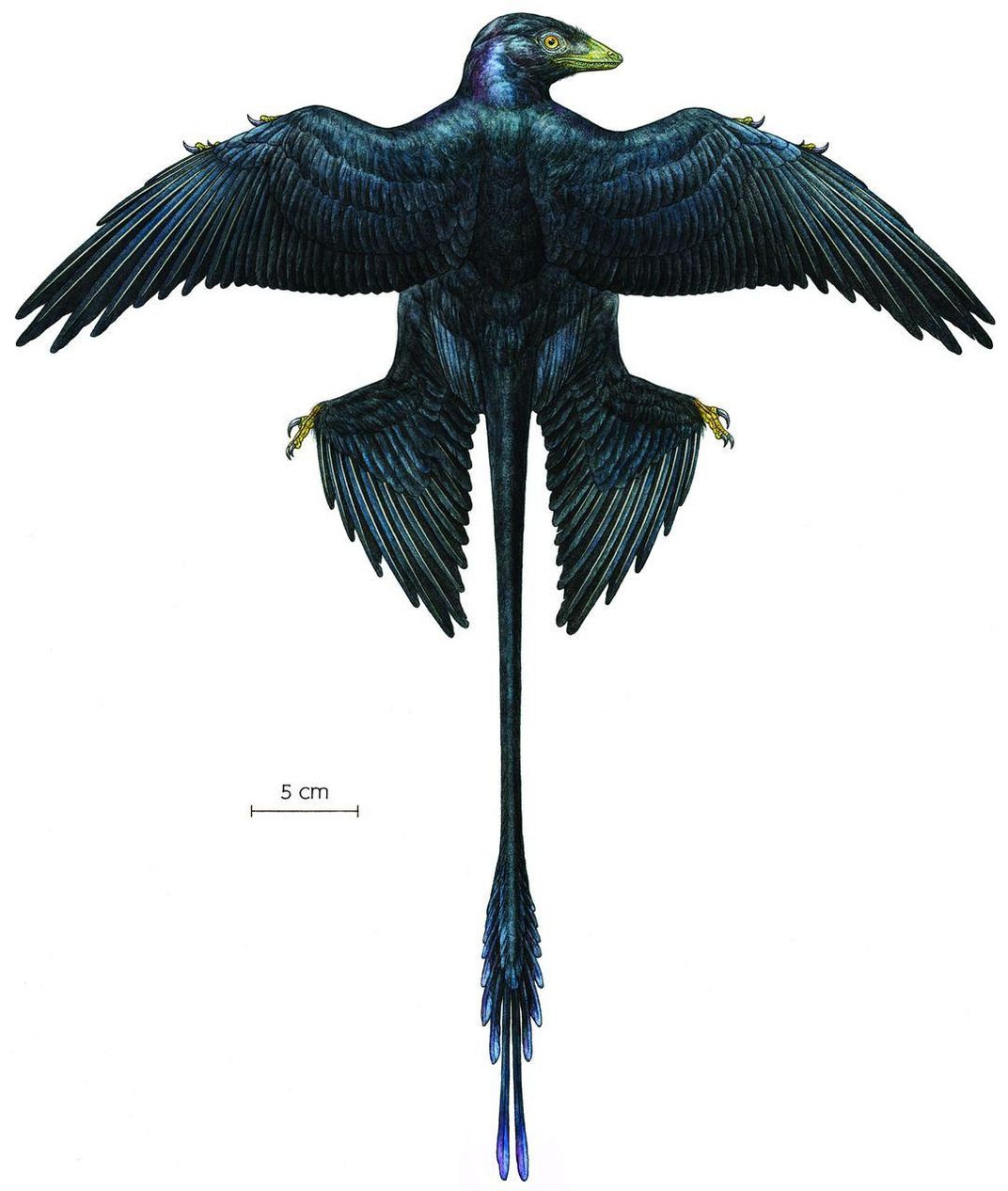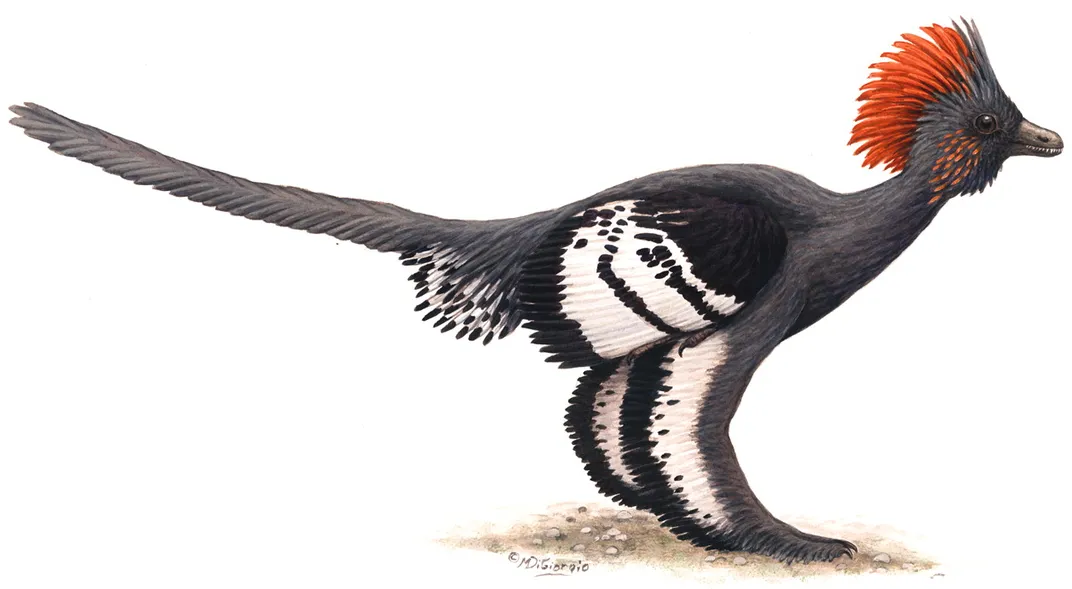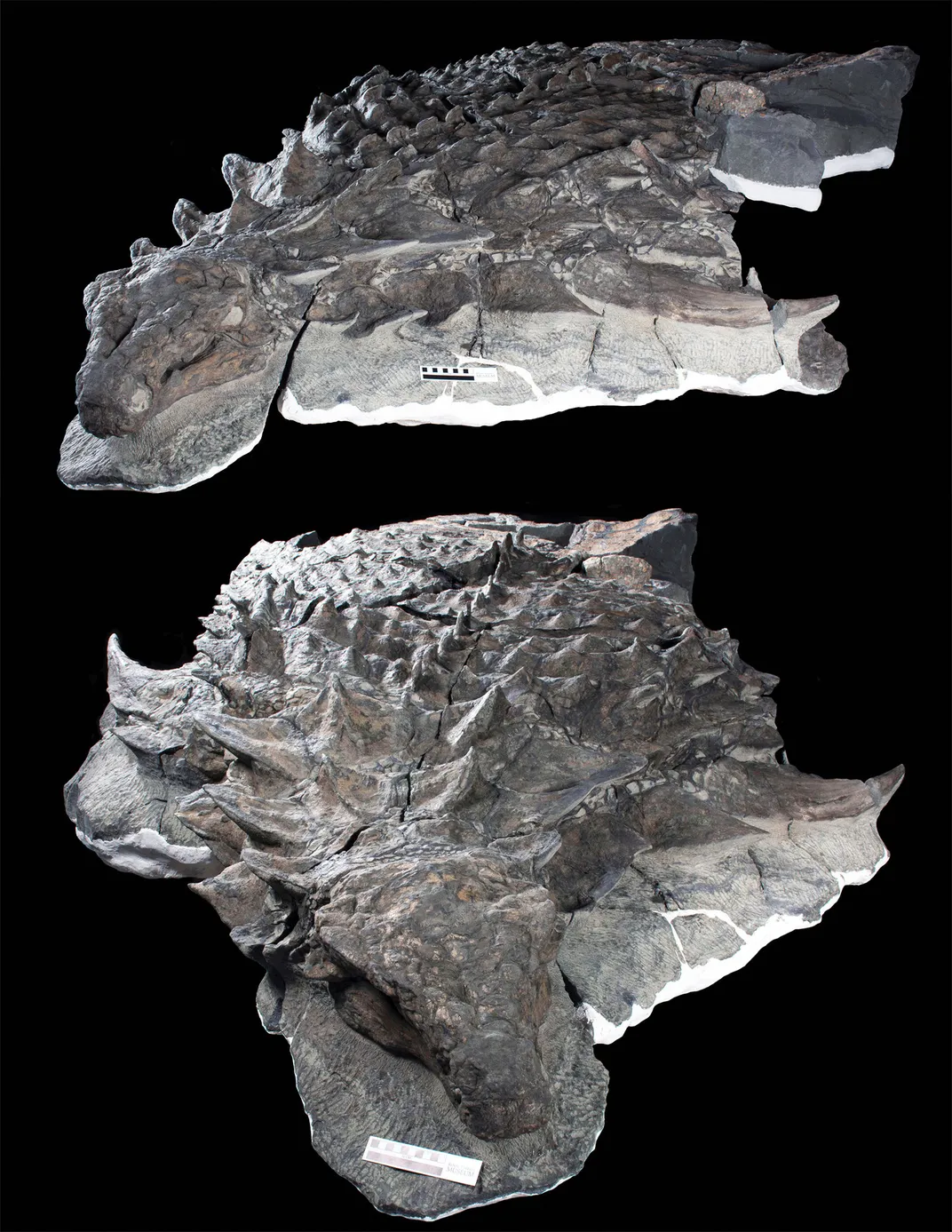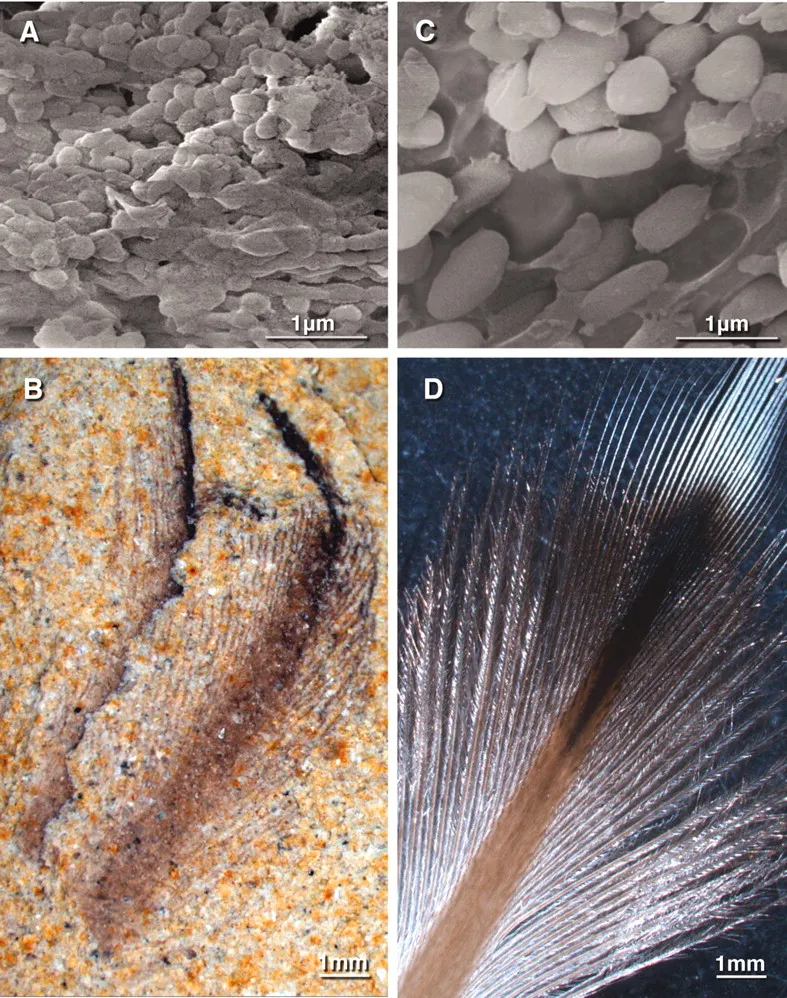The Colors of Dinosaurs Open a New Window to Study the Past
Old fossils and new technology are coloring in life’s prehistoric palette
/https://tf-cmsv2-smithsonianmag-media.s3.amazonaws.com/filer/fa/ae/faaec50a-63f7-4080-a266-55e02a3508ab/1-s20-s0960982217311971-gr2_lrg.jpg)
On December 9, 1833, the English fossil collector Elizabeth Philpot sent a letter to naturalist William Buckland. In addition to requesting back some vertebrae of a marine reptile Buckland had borrowed, Philpot also included notes on a recent trip with a young upstart fossil hound—the pioneering paleontologist Mary Anning. But what made the note special was an illustration Philpot had included with the letter. It depicted the toothy smile of an Ichthyosaurus skull, drawn after one of the many such fossils that Philpot, her sisters and Anning were finding in the ancient rocks of England’s southern coast. And it wasn’t drawn in any ordinary ink. The sepia tones were made from the preserved ink of a squid-like creature found in the same deposits as the ichthyosaur, revitalized after 200 million years.
On the surface, Philpot’s drawing might only seem to be a neat fossiliferous trick. In 2009, another drawing made from ancient ink kicked up renewed attention for the surprising fact that traces of prehistoric color could persist to the 21st century. But the fact that such primordial shades can be recovered at all opens up a realm of scientific possibility. With the right specimens, experts can start to color in the fossil record.
Sometimes ancient hues can be seen with the naked eye. “Researchers have known about fossil insect color patterns and mollusk color patterns all the way back to the Victorian era,” says University of Bristol paleobiologist Jakob Vinther. But it’s the possibility of unlocking the colors of dinosaurs that has captured the imagination of experts and the public alike.
For almost the entire history of paleontology, there was no way to tell what hues dinosaurs actually wore. Perhaps, in exceptional circumstances, a fossil might preserve some soft tissues showing patches of light and dark skin or striped plumage, but the actual, in-life coloration of the animal was long thought to be beyond the reach of detection. Yet discoveries like Philpot’s use of very old ink indicated that whispers of color might survive after all. Thanks to a combination of delicate preservation and advanced imaging technology, allowing researchers to see the microscopic details of fossils, paleontologists are learning more than ever about the Mesozoic palette.

The biological key to solving the coloration puzzle comes down to miniscule structures called melanosomes. These are tiny, blobby organelles that contain pigment, or melanin, and are present in soft tissues such as skin, scales, and feathers. And while these details were often cast aside as fossil bacteria in decades past, renewed efforts in the 21st century have been able to find the relationship between these tiny structures and colors.
A fossil similar to the one that inspired Philpot’s art set Vinther, now at the University of Bristol, on the trail of fossil colors in 2006. The ink sac of a fossil squid Vinther studied contained melanosomes after 200 million years. And if they could be found in squid ink, why not other fossils, like feathers? An analysis by Vinther and colleagues of a Cretaceous feather found in Brazil opened up the possibility, leaving the researchers to conclude, “The discovery of preserved melanosomes opens up the possibility of interpreting the colour of extinct birds and other dinosaurs.”
Pulling color from the past requires a combination of lucky finds with advanced imaging techniques, says Virginia Tech paleontologist Caitlin Colleary. First, paleontologists need a fossil which is likely to have preserved melanin—a fossil not just with bones, but feathers, skin or hair. These fossils often contain both melanosomes as well as chemically-degraded melanin pigment, and when paleontologists find such a fossil, then they can use modern technology to take a closer look.
“You start by looking for the microbodies using instruments like scanning electron microscopes,” Colleary says. Once those characteristic shapes turn up, chemical analysis can confirm the presence of melanin pigment. “This was particularly critical early on in fossil melanin studies because there was still some doubt that the microbodies were in fact melanosomes and not other similar structures, like bacteria,” Colleary says. From there, comparisons of the physical and chemical signatures of the melanosomes and melanin can be compared to those of living animals, for which color is known, to reconstruct the look of creatures long dead.
When paleontologists announced the discovery of the feathered dinosaur Anchiornis in 2009, the preserved plumage surrounding the skeleton was a dark, carbon-colored shade. But analysis of another Anchiornis fossil carried out by Vinther and colleagues the following year revealed a striking color pattern that had previously been invisible. The distribution and details of the preserved melanosomes indicated that Anchiornis was covered in feathers of black and white—not dissimilar from a magpie—with a splash of red feathers on the top of its head. For the first time, a dinosaur had been fully restored in living color.

One by one, other dinosaurs started to show their true colors. The week before the Anchiornis paper came out, the small, fuzzy dinosaur Sinosauropteryx was shown to have a vibrant, red-and-white banded tail. In 2012, the stacked arrangement of melanosomes found in the feathers of four-winged dinosaur Microraptor was shown to create an iridescent sheen similar to that of a modern raven. (Avian dinosaurs joined the list, too, with giant fossil penguins bearing color patterns of black, red and gray.) And while early studies focused on feathers, paleontologists soon found that melanosomes can reveal the hues of scaly dinosaurs, too. The beaky, horned dinosaur Psittacosaurus was countershaded dark above and light below to help with camouflage, and the immense armored dinosaur Borealopelta sported reddish-brown tones.
Naturally, there are some limits to this approach. The first is that bones alone are of no help. There must be some sort of preserved soft tissue, such as feathers or skin. Impressions won’t do. “You need organic residues,” Vinther says. The prehistoric animal had to be buried so quickly and preserved in such detail that the remains of the animal’s actual tissues are preserved.
And not all coloration in animals is created by melanosomes. Some colors, like yellows and blues, are created by biochemicals that paleontologists have yet to detect in fossils. The current methodology won’t work for every dinosaur, or every color. But the good news is that the approach is creating at least a partial picture.

What the colors meant to the animals themselves is another matter. In the case Borealopelta, for example—with a pattern of rusty red on top, light on bottom—the shading might have been a way for the low-slung dinosaur to hide from the ravenous tyrannosaurs of the time. Other dinosaurs were flashier. The candy-cane tail of Sinosauropteryx was likely a social signal, used by these dinosaurs to communicate with each other when they met.
This type of analysis reveals the potential of the emerging field of fossil coloration. By reconstructing long lost shades, paleontologists can detect and investigate ancient behaviors that have previously been hidden from view.
Different colors tell different stories. The dark above, light below pattern and stripes of the horned dinosaur Psittacosaurus might indicate that this animal lived in a forested habitat with diffuse light, while the bandit mask and stripes of Sinosauropteryx might indicate a preference for more open habitats where blending in was critical to not being picked out by a larger carnivore. That the dinosaurs were camouflaged not only says something about where they lived, but also about the dangers they faced. “Fossil color studies really do offer an unprecedented opportunity to make interpretations about behavior and biology from the fossil record,” Colleary says.

Paleontology has always been an interdisciplinary science, at the crossroads of multiple disciplines such as anatomy and geology. The study of fossil color expands the field further, drawing from biochemistry and advanced imaging techniques as well as the more traditional, morphological approaches.
“I think we need to be open to the fact that dinosaur research is not simply bone fondling anymore,” Vinther says. “There are tons of feathered dinosaurs and bird fossils still to be described, so soon we can write the Audubon Guide to Cretaceous Birds and Dinosaurs and show which habitats they lived in and perhaps soon show male and female feather coats, which certainly would have varied in many dinosaur species.”
Research continues, but what’s already been found raises questions about what might be gleaned yet from the fossil record. “Perhaps we will one day find that they had seasonal plumage, like colorful displays for the mating time,” Vinther says, “and if we ever find soft tissue dinosaurs in higher latitudes, like Australia, perhaps we will see some with white plumage during the cold and snowy winters.” Such a find would truly be a dinosaur of a different color.
/https://tf-cmsv2-smithsonianmag-media.s3.amazonaws.com/accounts/headshot/RileyBlack.png)
/https://tf-cmsv2-smithsonianmag-media.s3.amazonaws.com/accounts/headshot/RileyBlack.png)